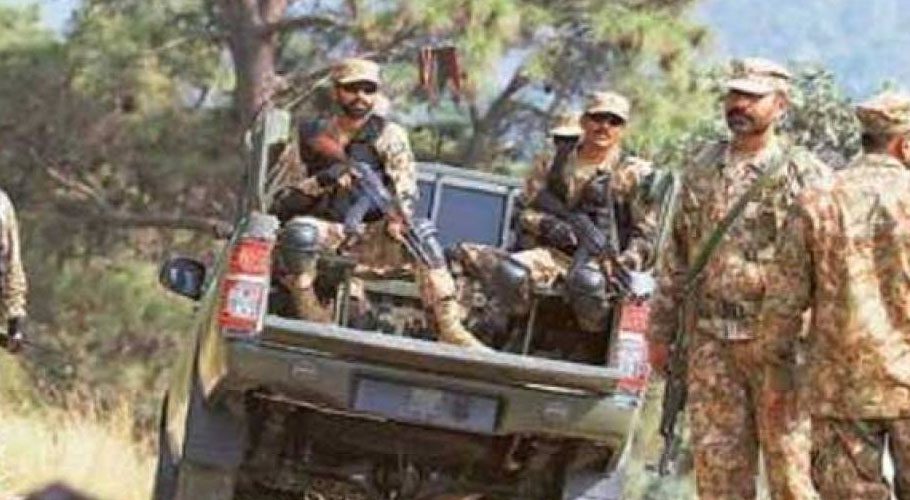There was a delay in writing about Iran’s missile attack on Israel on October 1. While there was a delay, there were also reasons for it. It’s not just us saying this; the Iranians are also saying it, particularly those who delayed their response to the significant killing in Tehran.
Experts in international affairs have had various opinions about this Iranian delay, and even Iran’s own analysts have offered different justifications.
Among Iranian analysts, Professor Mohammad Marandi is quite significant. His importance lies in the fact that he does not hold any official position. However, he was part of the negotiation team that engaged with the United States and European countries, resulting in Iran’s withdrawal from its nuclear program, which Donald Trump later tore up.
Similarly, Professor Marandi was also part of the Beijing agreement between Saudi Arabia and Iran.
It is a common practice that when a country does not want to officially state something but wants to communicate it publicly, it employs some “civilian” individuals for this purpose. In Iran, Professor Marandi serves this role.
In response to the significant killing in Tehran, he often pointed out that Iran is pursuing a psychological warfare strategy against Israel. We found this hard to digest because the delay had gone beyond what was necessary for a psychological tactic.
Thus, when a significant killing occurred in Lebanon, it brought considerable embarrassment to Iran. The clear implication of this killing was that Israel was not under any psychological pressure from Iran; it was selecting its next targets. This led to the reality becoming evident on the streets of Tehran.
To understand the emerging reality, it is essential to recognize that in Iran’s state affairs, there are matters beyond the control of the government. One of these matters is Iran’s foreign policy, which is directly under the control of the Supreme Leader, Ayatollah Khamenei.
However, the significant killing in Tehran occurred on the same day that the new Iranian president, Masoud Pazeshkian, had just taken his oath of office. He represents a faction in Iran often referred to as “reformists,” but you can consider them as liberals in our context.
Therefore, it was impossible to overlook the new president in the discourse surrounding the significant killing in Tehran, and this led to complications. Following the killing in Lebanon, the revolutionaries accused the reformist president, claiming that he was responsible for the situation.
The reality was indeed this. The situation became so precarious for President Masoud Pazeshkian that he had to acknowledge that the United States and Western countries were assuring him that they were facilitating a ceasefire, that Israel would withdraw from Gaza, and that Iran should not attack Israel. However, what happened? Iran lost even its most important partner in Lebanon, and the Israeli military advanced into southern Lebanon.
After a lethal delay, Iran finally launched missiles at Israel on October 1. This time, the U.S. was informed two hours before the attack. The question arises: why was the U.S. notified? In our previous columns, we have repeatedly clarified that Israeli Prime Minister Benjamin Netanyahu desires war with Iran, while Iran and other regional countries are not interested in it.
Most importantly, both Russia and China are against such a war, as they are making extraordinary progress towards BRICS. In this context, a historic summit is set to take place in Kazan, Russia, on October 25, which experts believe could alter the geopolitical landscape.
It is noteworthy that among the key participants in this summit will be the Saudi and Emirati crown princes and the Iranian president.
Thus, by notifying the U.S. two hours before the missile attack on Israel, Iran essentially communicated that it was not initiating a war but settling old scores. This was a continuation of its strategy to avoid conflict.
The Iranian attack on October 1 is of significant importance. Just look at the Russian activities following its preparation over the next week. Immediately after the major killing in Lebanon, Sergei Shoigu, the Secretary of the Russian Security Council, made an unannounced visit to Tehran. The next day, Russian Prime Minister Mikhail Mishustin also arrived in Tehran.
A day before the attack, news broke that Russian President Vladimir Putin had suddenly shown up at his office late at night, indicating an unusual situation.
After the Iranian attack on April 1, the following day, a Russian deputy prime minister also visited Tehran. These Russian leaders remained in Tehran for several days after the attack. Understanding this significant Russian activity is crucial due to its far-reaching implications.
The initial impression from such high-level activity is that it seems like a major threat has emerged, not just for Iran but for Russia as well. This was a clear message to both the U.S. and Israel that Iran is not alone; we are fully present too. Furthermore, the presence of Russian leaders in Tehran during and after the attack served as a “shield.” When the leader of a major country is visiting another country’s capital, taking military action against it becomes a significant mistake.
If you recall, just an hour after the Iranian missile attacks, Netanyahu boasted that Israel would launch a retaliatory strike that very morning, but he couldn’t muster the courage to do so.
Examining Iran’s missile attack and its impact on Israel, it was a strategically successful attack. Iran used around two hundred missiles for this operation. However, it is clear that many of these were decoys. For the benefit of general readers, when a country plans to launch a missile attack against another country with an air defense system, intelligence agencies already know how many missiles or rockets the target country’s air defense can fire for its defense.
Suppose 30 missiles are required for the attack, but the target country’s air defense can fire 100 rockets and missiles; then, approximately one hundred and fifty decoys will be launched, followed closely by 30 real missiles. You can think of decoy missiles as toy missiles that fly to the target, appearing as missiles on radar, but their sole purpose is to deplete the enemy’s air defense before the real warheads arrive.
A decoy missile can cost around $25,000, making it quite cheap. In contrast, Israel’s Iron Dome missile costs one million dollars, while the missiles used in the Arrow series cost two million dollars. This illustrates how effective a simple decoy can be.
In Israel, the news blackout law is strictly enforced. Without government approval, no one is allowed to release news, images, or videos related to military matters. Thus, taking advantage of this blackout, initially, everyone, including the U.S. President, claimed that Iran’s attack had been entirely thwarted. President Biden even praised the U.S. and Israeli military for their efforts. However, a significant problem arose: a large number of Palestinians reside in Israel. They leaked videos within the first hour of the attack, showing Iranian missiles striking Israeli air bases.
Thus, this falsehood did not last long. Ultimately, major American newspapers had to admit that the Iranian attack was severe. Subsequently, the remaining Western media also began to acknowledge that at least 30 missiles had successfully hit their targets, resulting in considerable damage.
This directly implies that Israel does not have an effective shield against Iranian missiles. If they can target their objectives even with a two-hour advance notice, there is no corner or inch of Israel that is safe. Its Iron Dome, David’s Sling, and Arrow series are of no use.
(Continued)
































